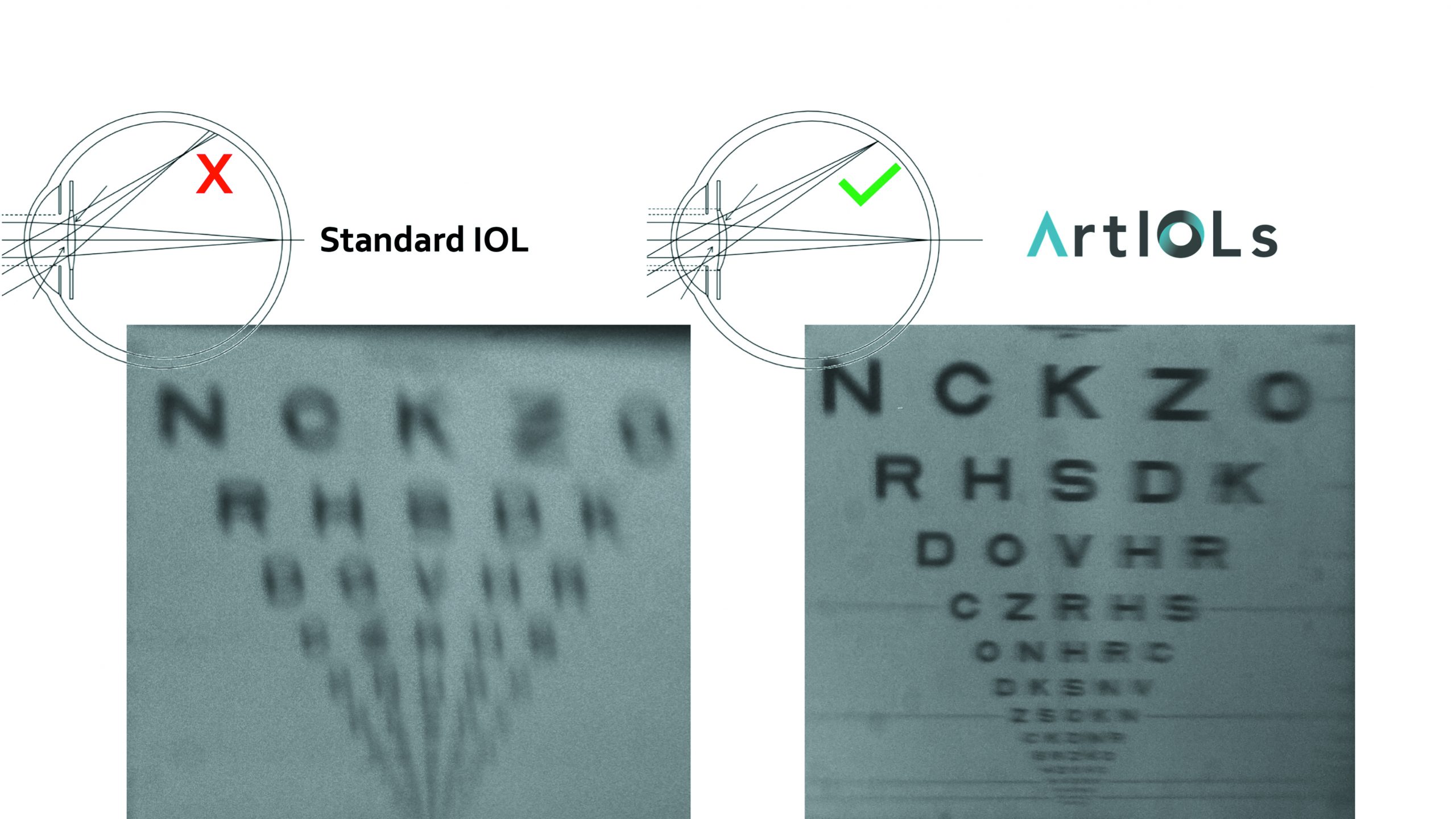New Meniscus IOL
New meniscus-shaped IOL may improve peripheral contrast and astigmatism.Roibeard Ó hÉineacháin reports

Roibeard O’hEineachain
Published: Thursday, July 29, 2021
 Image caption:
Images of letter chart recorded in a model eye at 40 degrees in an eye with a standard IOL and with ArtIOL. The image quality is clearly superior with the meniscus lens.
Image caption:
Images of letter chart recorded in a model eye at 40 degrees in an eye with a standard IOL and with ArtIOL. The image quality is clearly superior with the meniscus lens.
Tags: cataract and refractive
Latest Articles
Nutrition and the Eye: A Recipe for Success
A look at the evidence for tasty ways of lowering risks and improving ocular health.
New Award to Encourage Research into Sustainable Practices
Sharing a Vision for the Future
ESCRS leaders update Trieste conference on ESCRS initiatives.
Extending Depth of Satisfaction
The ESCRS Eye Journal Club discuss a new study reviewing the causes and management of dissatisfaction after implantation of an EDOF IOL.
Conventional Versus Laser-Assisted Cataract Surgery
Evidence favours conventional technique in most cases.
AI Scribing and Telephone Management
Automating note-taking and call centres could boost practice efficiency.
AI Analysis and the Cornea
A combination of better imaging and AI deep learning could significantly improve corneal imaging and diagnosis.
Cooking a Feast for the Eyes
A cookbook to promote ocular health through thoughtful and traditional cuisine.
Need to Know: Spherical Aberration
Part three of this series examines spherical aberration and its influence on higher-order aberrations.
Generating AI’s Potential
How generative AI impacts medicine, society, and the environment.